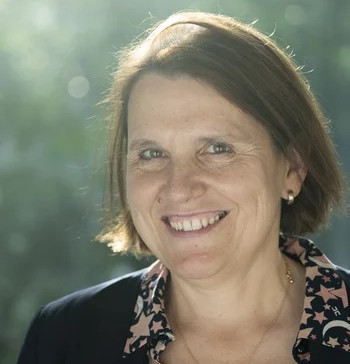MARVEL Distinguished Lecture — Claudia Felser
It will take place on Tuesday, May 2, 2023, 3 pm (CEST) on Zoom.
https://epfl.zoom.us/j/65120386571
Passcode: 6928

Chirality and topology
Chirality is a very active field of research in organic chemistry, closely linked to the concept of symmetry. Topology, a well-established concept in mathematics, has nowadays become essential to describe condensed matter [1,2]. At its core are chiral electron states on the bulk, surfaces and edges of the condensed matter systems, in which spin and momentum of the electrons are locked parallel or anti-parallel to each other. Magnetic and non-magnetic Weyl semimetals, for example, exhibit chiral bulk states that have enabled the realization of predictions from high energy and astrophysics involving the chiral quantum number, such as the chiral anomaly, the mixed axial-gravitational anomaly and axions [3-5]. Chiral topological crystals exhibit excellent chiral surface states [6,7] and different orbital angular momentum for the enantiomers, which can be advantageous in catalysis. The potential for connecting chirality as a quantum number to other chiral phenomena across different areas of science, including the asymmetry of matter and antimatter and the homochirality of life, brings topological materials to the fore [8].
References:
[1] M. G. Vergniory, B. J. Wieder, L. Elcoro, S. S. P. Parkin, C. Felser, B. A. Bernevig, N. Regnault, Science 2022, 376, 6595.
[2] P. Narang, C. A. C. Gracia and C. Felser, Nat. Mater. 2021, 20, 293.
[3] J. Gooth et al., Nature 2017, 547, 324.
[4] J. Gooth et al., Nature 2019, 575, 315.
[5] D. M. Nenno, et al., Nat Rev Phys 2022, 2, 682.
[6] B. Bradlyn, J. Cano, Z. Wang, M. G. Vergniory, C. Felser, R. J. Cava and B. A. Bernevig, Science 2016, 353, aaf5037.
[7] N. B. M Schröter, et al., Science 2020, 369, 179.
[8] C. Felser, J. Gooth, preprint arXiv:2205.05809
About the speaker
Claudia Felser studied chemistry and physics at the University of Cologne, with a diploma in solid state chemistry (1989) and a doctorate in physical chemistry (1994). After postdoctoral fellowships at the Max Planck Institute in Stuttgart (Germany) and the CNRS in Nantes (France), she was an assistant professor (C1) at the University of Mainz in 1996, and then a full professor there in 2003 (C4). She is a Scientific Member and the Director at the Max Planck Institute for Chemical Physics of Solids in Dresden.
Her research interests are the design, synthesis, and physical characterization of new quantum materials, in particular, Heusler compounds, and topological materials for energy conversion and spintronics.
Claudia Felser is the recipient of numerous awards, including the Order of Merit (Landesverdienstorden) of the state Rheinland Pfalz (2001) for the foundation of the first NAT-LAB for school students at the University Mainz with a focus in female school students. She is a fellow of the IEEE Magnetic Society, American Physical Society, Institute of Physics, London, CIFAR Canada and the Materials Research Society of India. In 2018, she is made a member of the Leopoldina, the German National Academy of Sciences, and acatech, the German National Academy of Science and Engineering. She received the 2019 APS James C. McGroddy Prize for New Materials together with Bernevig (Princeton) and Dai (Hongkong). She was elected tothe United States National Academy of Engineering (NAE) in 2020 and the United States National Academy of Sciences (NAS) in 2021. She was awarded the 2022 Max Born Prize and Medal of DPG (German Physical Society) and IOP (Institute of Physics), and the Wilhelm-Ostwald-Medal of the Saxon Academy of Science.
Did you miss previous MARVEL Distinguished Lectures? You can watch them on the Materials Cloud dedicated page.
Low-volume newsletters, targeted to the scientific and industrial communities.
Subscribe to our newsletter